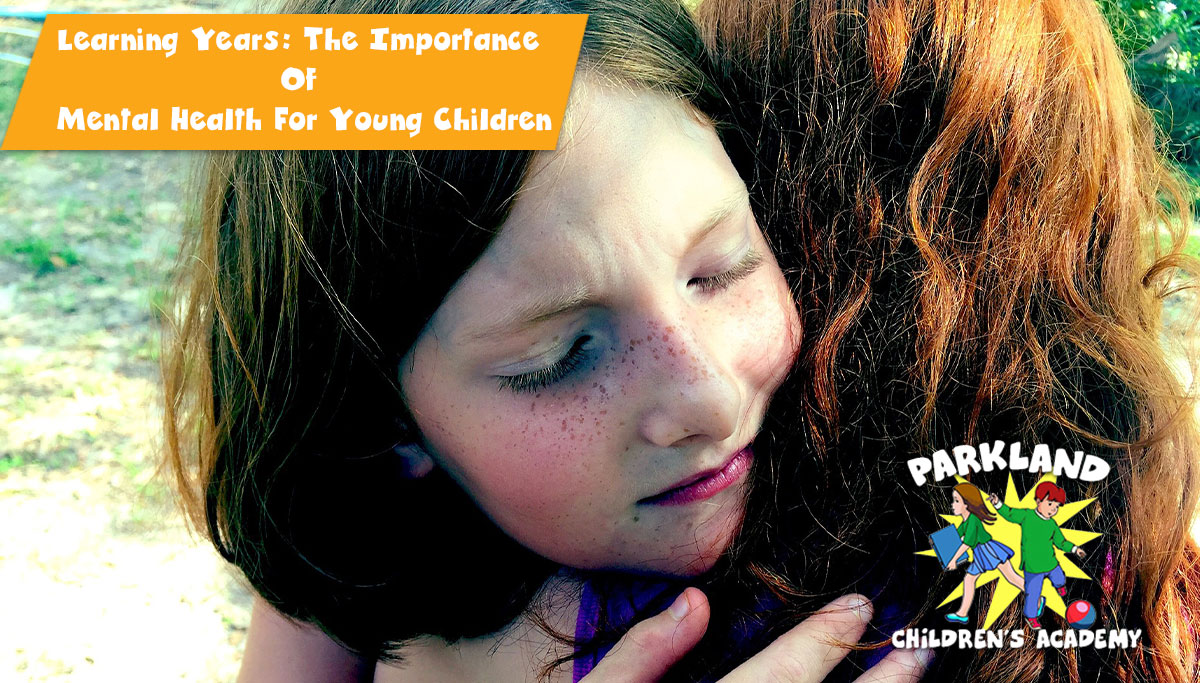
Mental health is extremely important in the early learning years, as children begin to interact with others their age and start to manage their emotions. But what does taking care of mental health look like for young children? How can you set the best example and teach your child healthy coping mechanisms? We’re here to break down children’s mental health to its bare essentials, helping you guide your child through navigating their feelings.
Mental Health In The Early Learning Years
There are two major components that we speak about when considering mental health: the emotions felt, and the way these emotions are reacted to. We’ve all felt anger at some point in our lives, but the key to good mental health is learning to understand that emotion and work through it instead of lashing out at others.
For a child in the early learning years, actions are extremely driven by emotions. If parents and caregivers respond negatively to a child’s anger, or berate them in the wrong way, the child will find negative outlets for that emotion. Caregivers can guide the management of these emotions with understanding and love. Instead of telling the child that they are bad, speak to them about how the action was bad, and how they can work on their emotions going forward.
The Effect of School, Family, and Community
Our mental health, while personal, is also a product of the family, friends, and community around us. As the saying goes, no man is an island! We observe and learn from the actions of others, perceive the emotions that others are feeling, and reach out when we need help to those closest to us. In the learning years, family, school, and the community act as a child’s support system. If a child is struggling with their mental health, parents, teachers, and friends will be the first to notice.
In addition to this, they’re also the first to help. Family provides a child with immediate support. Home life heavily impacts a child’s mental health and are in the best position to reaffirm unconditional love and acceptance, and to provide emotional support. Schools offer structure and routine, and also teach how interactions with others in a team should work. Socializing with friends and other class members helps your child alleviate feelings of loneliness, and through practice, helps them strengthen interpersonal bonds.
The community, including friends and neighbors, also impacts mental health. When children observe acts of kindness between neighbors and friends, they can learn from positive social interactions and acknowledge that there are always people available to lend a hand and help out. In some cases, a psychologist also contributes to this community.
How To Improve Your Child’s Mental Health
Mental Health America states that 1 in 5 children will experience mental health problems. How best can you help? The first step to improving your child’s mental health is to communicate. Communicate to them that you’re there for them, that you’re willing to listen, and that you want to help them manage their emotions. Young children will have trouble communicating their feelings, so it’s up to you to help them understand that, while negative emotions are alright, negative actions are not. Criticizing the action is important but criticizing the child can be harmful.
Parents, schools, and the community can come together to fulfill a child’s basic needs, promoting exercise, good nutrition, and self-confidence. All of these factors contribute to how a child feels and the way their physical and mental health develops. Teachers and parents can help their children set realistic goals, inspiring children to work at what they enjoy and feel a sense of accomplishment.
Most importantly, make sure you spend quality time with your child. Board games, story time, cooking, or playing with toys together shows your child that you’re there for them, you care about them, and you’re invested in their wellbeing.
